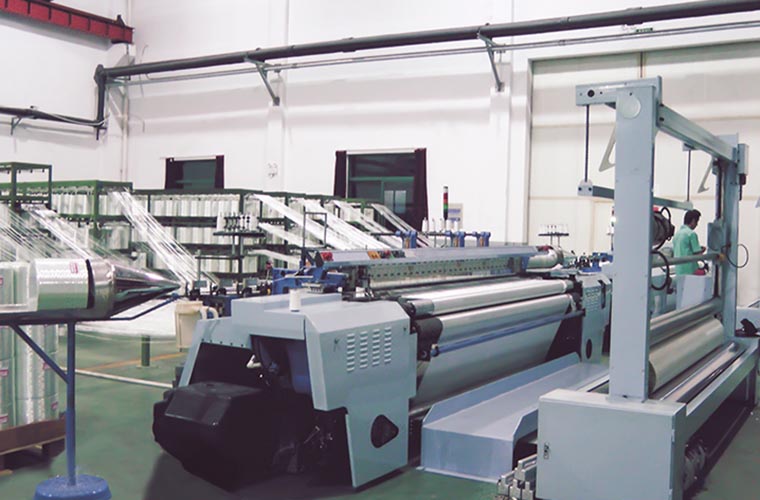Rapier weaving machine,as the most widely used shuttleless loom, is one of the hottest category of the SUNTECH products. In addition to the characteristics of high-speed, high automation and high-efficiency production of shuttleless looms, its active weft insertion method has strong variety adaptability and can adapt to various types of looms.
The weft insertion of similar yarns, and the rapier loom also has obvious advantages in multi-color weft weaving, which can produce yarn-dyed products with up to 16-color weft yarns. With shuttleless looms replacing shuttle looms, rapier looms will become the main production machine for woven fabrics.

History of Rapier
Nowadays, rapier weaving machines are known for their reliability, performance and versatility.
In the past 150 years, the weaving industry has seen the most significant modifications of any industry. A shuttleless loom was invented by John Smith in Salford, England, in 1844, and is still in use today. Despite the fact that the fly shuttle was first used in 1733, the shuttleless loom was not created until 1844, when John Smith was granted a patent to eliminate the need for it.
Phillippe and Maurice filed a patent application in 1855, W.S. Laycock filed one in 1869, and W.Glover filed one in 1874. After stiff rapiers were first developed in 1870, O. Hallensleben made significant improvements to them in 1899. The invention of loop transfer by John Gabler in 1922 was the most important breakthrough in the field to that point.
In 1925, R.G.Moya of Barcelona exhibited the first contemporary flexible rapiers, which were based on a Spanish patent application submitted in 1924 and patented by the Spanish government. The breakthrough concept of grasping the weft at its tip and passing it off to the taker or receiver right there in the shed itself was not introduced until 1939 by another pioneer, R.Dewas. However, it was not until after World War II that patents were sought for the technology. It wasn't until the 1950s and 1960s that the technique became commercially viable, with the weft-insertion rate now topping 1,500 meters per minute.
How Is The Rapier Weaving Today?
Rapier weaving is still practiced today and may be seen in a variety of forms. Rapid and continual development has occurred in the art of rapier weaving throughout each of the preceding two decades.
In the rapier weaving machine, spiral-wound yarns like as cotton-wool and silk-silk are utilized to make beautiful fabrics of the finest quality. In recent years, rapier weaving machines that are both faster and more versatile have been created. You may create a unique filler by selecting from a variety of reed lengths, shedding motions, and selvedge colors to suit your needs.
It can be used to weave a wide variety of materials, including clothing, shirts, jeans, suits, and industrial or furniture textiles, with filler colors or yarns ranging from one to eight or twelve and a maximum weight of 500 g/m2. It can weave a wide variety of materials, including clothing, shirts, jeans, suits, and industrial or furniture textiles.
Because modern rapier weaving machines are completely automated and controlled by a central microprocessor control system, they are very dependable and user-friendly devices to operate. They are also more efficient when it comes to changing trends and producing higher-quality materials. In addition, they are less costly to run and use less energy.
For more information, don’t hesitate to discover more witha simple click.
Why Choose Rapier Loom at SUNTECH?
When it comes to weaving machines, SUNTECH stands out as a leading manufacturer of the most creative solutions for automated looms, Weaving Machines, loom machines, and other types of weaving machines.
Suntech is a well-known producer and manufacturer of weaving machines, rapier looms, and loom machines, amongst other textile machinery.
A traditional rapier loom, an automated loom, and an asymmetrical jacquard loom are the foundations of the ST range of weaving equipment.
A greater number of employees are dedicated to the manufacturing of speciality textiles, such as glass fiber fabrics, carbon fiber fabrics, and industrial fabrics.
For more products, you can take a look at:




